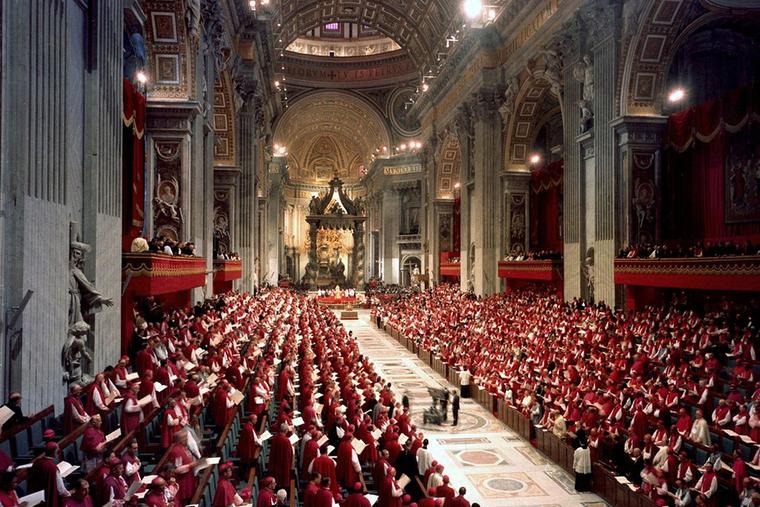- Feb 5, 2002
- 166,677
- 56,287
- Country
- United States
- Faith
- Catholic
- Marital Status
- Married
- Politics
- US-Others
COMMENTARY: Sixty years later, ‘Sacrosanctum Concilium’ remains a vital reference point.
After more than three years of preparation, the Second Vatican Council began in October of 1962, with ambitious goals for fostering a renewal in the Church’s mission in the modern world. But how would the Council make such ideals a reality?
We can get an important glimpse of how the Council would carry out its daunting task in the first document that came up for debate. This text was the Constitution on the Sacred Liturgy, which later became what we know today as Sacrosanctum Concilium.
At the fourth general meeting of the Council on Oct. 22, 1962, the Italian Franciscan Father Ferdinando Antonelli, who was secretary of the Commission on the Liturgy, presented a summary of the eight-chapter draft to the Council Fathers. He spoke of the urgent need for a revision and adaptation of liturgical texts and ceremonies, as recognized by most of the Church’s pastors and the unanimous opinion of experts.
Additionally, he pointed out a very serious pastoral motive: The faithful had, over the centuries, become mute spectators in the liturgy. Father Antonelli noted that the idea of fostering a more active participation among the faithful had already been present earlier in the 20th century, during the pontificate of Pope Pius X. This pope, with his motto Instaurare omnia in Christo (“to restore all in Christ”), had given a new impulse to the liturgical renewal that itself had already been well underway the century before.
Continued below.

 www.ncregister.com
www.ncregister.com
After more than three years of preparation, the Second Vatican Council began in October of 1962, with ambitious goals for fostering a renewal in the Church’s mission in the modern world. But how would the Council make such ideals a reality?
We can get an important glimpse of how the Council would carry out its daunting task in the first document that came up for debate. This text was the Constitution on the Sacred Liturgy, which later became what we know today as Sacrosanctum Concilium.
At the fourth general meeting of the Council on Oct. 22, 1962, the Italian Franciscan Father Ferdinando Antonelli, who was secretary of the Commission on the Liturgy, presented a summary of the eight-chapter draft to the Council Fathers. He spoke of the urgent need for a revision and adaptation of liturgical texts and ceremonies, as recognized by most of the Church’s pastors and the unanimous opinion of experts.
Additionally, he pointed out a very serious pastoral motive: The faithful had, over the centuries, become mute spectators in the liturgy. Father Antonelli noted that the idea of fostering a more active participation among the faithful had already been present earlier in the 20th century, during the pontificate of Pope Pius X. This pope, with his motto Instaurare omnia in Christo (“to restore all in Christ”), had given a new impulse to the liturgical renewal that itself had already been well underway the century before.
Continued below.

The Liturgy Debate of Vatican II: A Look Back
COMMENTARY: Sixty years later, ‘Sacrosanctum Concilium’ remains a vital reference point.
